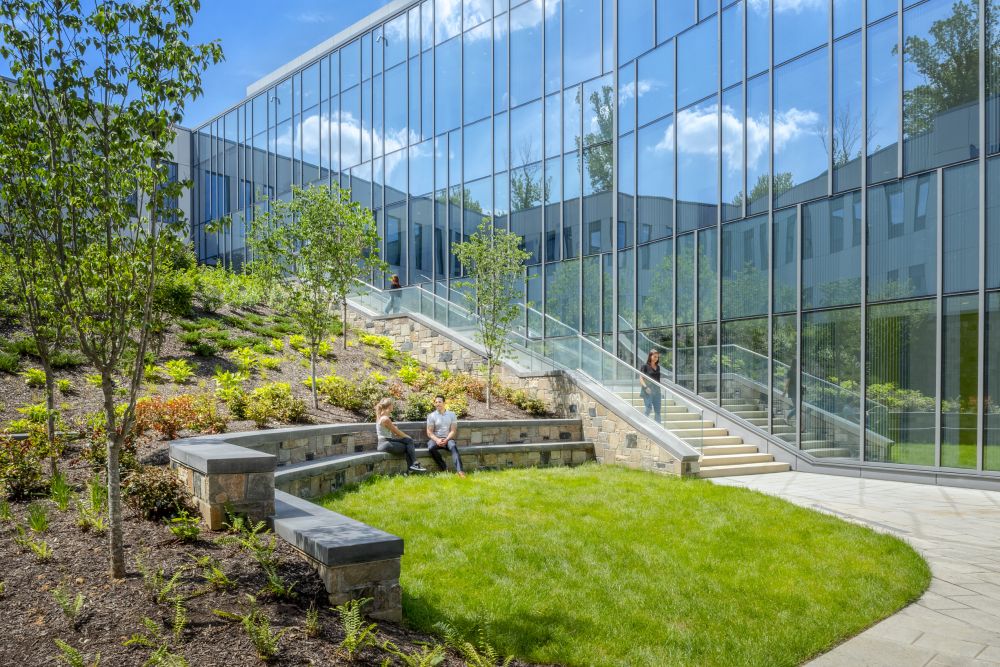Center for Behavioral Health and Learning
A pioneering integrated mental healthcare model
- Client
- University of Washington Medicine
- Location
- Washington, United States
- Size
- 184,000 square feet
- Status
- Completed
Washington State, like most of the U.S., is grappling with a significant mental health crisis, with over 1.26 million residents in the state affected by mental health disorders, and only about a third receiving adequate care. In Seattle’s King County, nearly 1 in 4 individuals are turned away during crises or when diagnosed with concurrent physical medical conditions. The Center for Behavioral Health and Learning addresses these critical gaps by vastly increasing the region’s capacity to support individuals and families facing serious and persistent mental health challenges.
Located adjacent to an existing acute care hospital on the UW Medical Center Northwest Campus, the new six-story building is a fully integrated, welcoming and healing environment for individuals struggling with both physical and behavioral health conditions. Designed by our SRG + CannonDesign team, the building introduces an innovative model for patient-centered mental healthcare, integrated medical care and workforce training.
The building offers a complete spectrum of clinical services in one location. Key features include:
- 75 beds for patients receiving court-ordered treatment, who require up to 180 days of intensive mental health treatment.
- The Garvey Institute Center for Neuromodulation on the first floor provides both outpatient and inpatient services, including electroconvulsive therapy and transcranial magnetic stimulation.
- Specialized geriatric care spaces for patients aged 60 or older with complex medical needs.
- Spaces to treat those with both mental and physical conditions, offering a holistic approach to treatment that aims for better long-term outcomes.
Innovative design supports mental health
The building features active ground-level public amenities such as indoor and outdoor dining. This integration destigmatizes mental health by fostering an environment that encourages open dialogue and understanding of behavioral health issues for anyone visiting the campus. Unlike typical mental health facilities often placed in less trafficked areas, the building's prominent location promotes visibility and acceptance.
Reducing patient stress is a priority, with design elements emphasizing natural light, scenic views and privacy. A soothing neutral palette with warm wood accents creates a calming atmosphere, distinctly different from the sterile, institutional settings typical of traditional mental health facilities. Inpatient units include multiple opportunities for patients to access the outdoors, including porch-like areas and a large, landscaped terrace on the fourth floor. Daylit open-concept social and dining spaces contribute to a restorative and inclusive environment.
Testimonials
A standout feature of the building is the state’s first emPATH unit, designed to divert individuals with acute psychiatric needs away from the neighboring emergency department and into an environment more conducive to de-escalating those in mental health crisis. This type of unit can drastically reduce the instance of medical or physical restraint, reduce strain on the emergency department, and safely stabilize patients who may otherwise have been admitted into an inpatient mental health bed.
Training a future workforce
Given that nearly half of Washington state’s counties lack a practicing psychiatrist or psychologist, the building also plays a crucial role in training the next generation of mental health practitioners. The University of Washington’s educational mission influenced the design, resulting in dedicated spaces for learners that facilitate collaboration among students, supervisors, and professionals — including those studying to be psychologists, nurses, social workers, occupational therapists, physical therapists, pharmacists and more.
Additionally, the facility is home to a pioneering telepsychiatry program that supports clinicians statewide, providing psychiatric advice that enhances the reach and effectiveness of mental health services, particularly in underserved areas.












